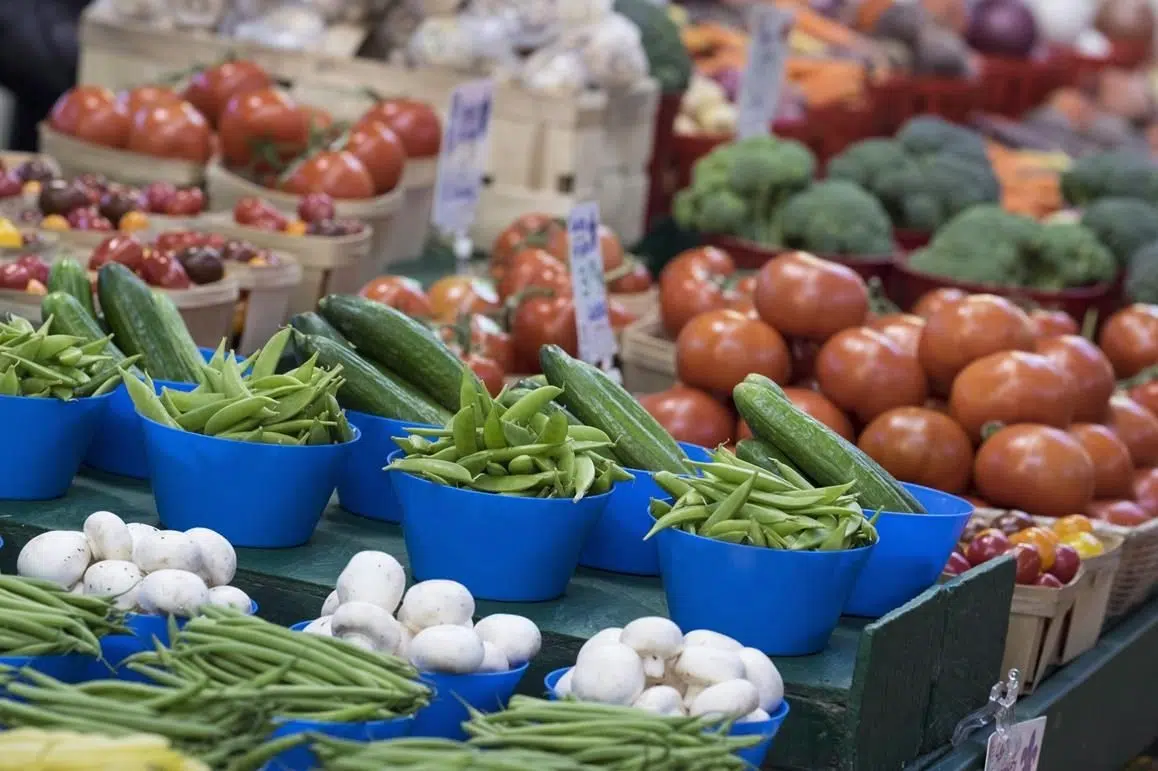The price people pay for food at the grocery store is expected to keep rising in 2023.
That prediction comes from the latest Canada’s Food Price Report, which suggests the average family of four could be paying an extra $1,000 at the grocery store compared to 2022. That would result in an increase of seven per cent.
Sylvain Charlebois, a Dalhousie University professor and the lead author of the report, said the change will likely be apparent in the first half of 2023, but there could be some better news on the way.
“What we’re expecting is a bit of a rocky first start to the year in 2023,” he said. “We’re expecting food prices to rise, unfortunately, but at the same time we’re expecting the expected economic downturn to help shoppers on a tight budget. We’re expecting grocers to offer more deals, essentially.”
Vegetables are expected to see the largest increase in price, but Charlebois thinks prices will bounce back with the supply chain growing more stable.
“We’re expecting supply chains to continue their recovery. It’s actually getting better; delays aren’t as significant,” he explained. “We’re obviously expecting things to remain more expensive. Prices have gone up to produce anything and to produce, it’s more tricky and more difficult.
“Generally speaking, we’re expecting grocers to fight for our business as things get tighter and tighter as we progress through the year in 2023.”
While prices are expected to remain high at the grocery store in 2023, Charlebois suggests there are some ways people can try to save at the store.
“Bulk buying might not be the best thing. I suggest for people to go to visit two or three stores regularly over two or three weeks,” he said. “I would go to one store, make sure you know what the fair market value of the products on your list is, and if you see a food price being too expensive, just walk away — don’t buy it.
“One thing that has changed over the last five years is prices are much more dynamic, market positions are changing daily and consumers need to know and understand what happens (on a daily basis).”
While the price of grocery items could rise and fall in the next year, food banks are expected to continue struggling, according to Charlebois.
“I’m actually on the board of the largest food bank in Canada and we’ve seen an increase in traffic,” he explained. “Right now there’s a bit of a double whammy impacting food banks and I’m sure the Regina Food Bank will tell you the same thing, that they’re having more difficulties getting food from grocers because the market is much more careful about how it spends its money on food.
“Secondly, there’s more traffic. That’s going to be a challenging situation for food banks. It has been challenging in 2022 and unfortunately we’re not expecting things to change in 2023.”
Families struggling to scrimp amid rising costs
The report is the third consecutive time a price increase has been predicted at Canadian grocery stores.
University of Saskatchewan associate professor Dr. Stuart Smyth in the department of agricultural and resource economics co-chaired the report.
Smyth said families are reporting taking significant steps to try and cut down their grocery costs.
A significant uptick in things like couponing among families was noted in the report, Smyth said, as well as a reliance on flyers and reward points on credit cards to help offset cost increases.
As well, he said consumers are reporting that instead of buying all the items they need in a single, hour-long grocery shopping trip at one store, people are opting for a grocery shopping tour approach where they will go to multiple stores, each for a different item.
Even with the high price of gas, Smyth said families have reported they are saving more with this approach.
Smyth said what stood out to him from this most recent report was how relentless the pressure is on supply chains and various food production factors around the world — a pressure that is not easing up.
He explained three main causes for those pressures: Uncertainty from the war in Ukraine; a continuously falling Canadian dollar; and, higher fuel costs. None of those three concerns shows any signs of conclusion in the next number of months, Smyth said.
Intertwined in those pressures come a few new terms referenced in the report. Smyth said shelflation comes from grocery stores relentlessly pushing up prices because of the constantly increasing prices to get items onto shelves.
For consumers, that can be a frustrating thing to see, given that other issues with the supply chain can deliver fresh items in less-than-peak condition with a much shorter shelf life.
Smyth said in those cases, consumers might want to look towards the frozen food aisle and begin to consider more frozen fruit and vegetable options. He noted that a bag of frozen carrots contains the same nutrients as a bag found in the produce aisle.
— With files from 650 CKOM’s Libby Giesbrecht











